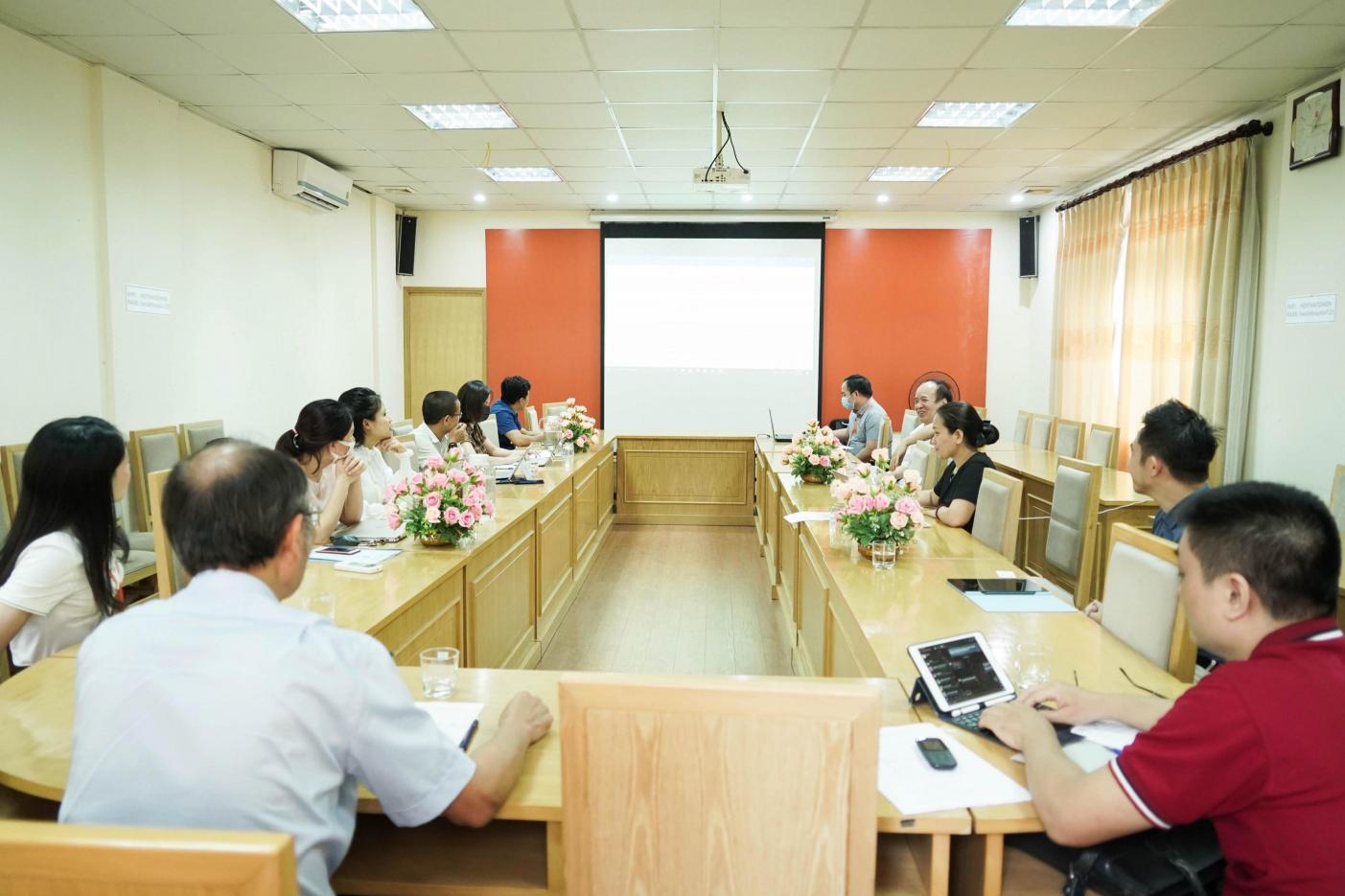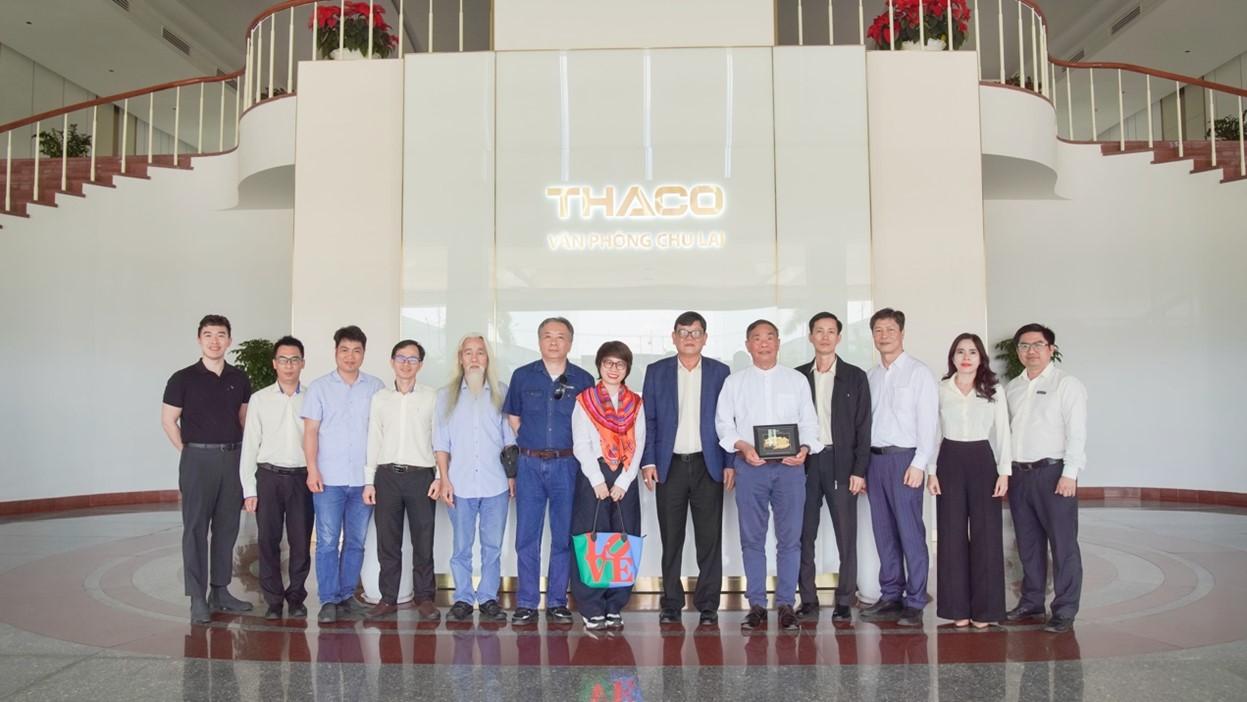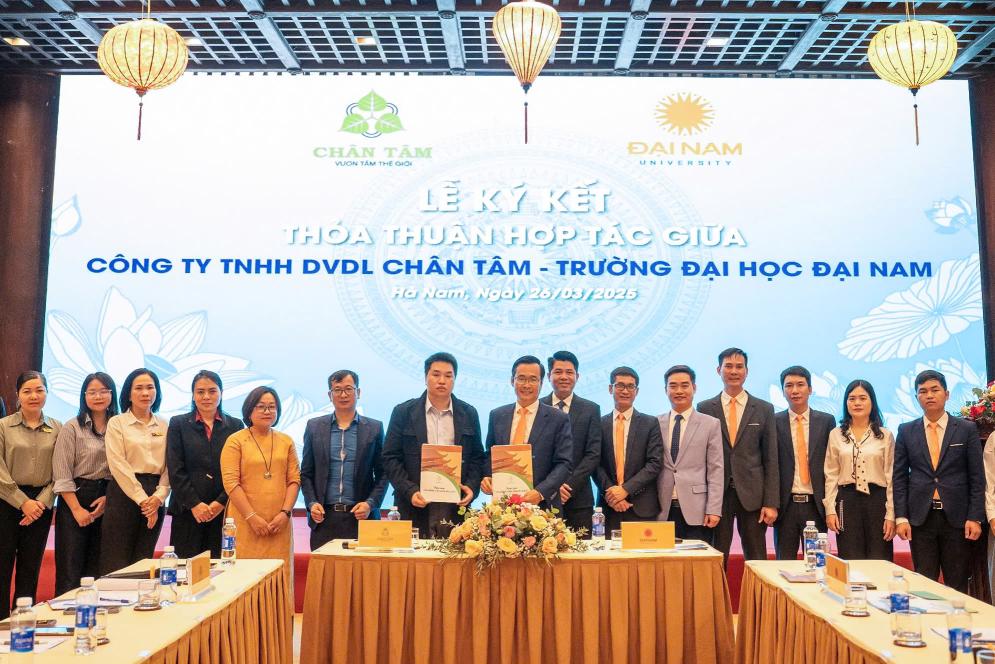Dai Nam University constantly strives to improve the quality of lecturers' lectures.

The workshop aims to: objectively assess and evaluate the current status of lecture quality in faculties in the school; create a forum for exchanging, replicating and spreading effective and positive teaching methods - classroom management - motivation - student assessment; provide opportunities for exchange and learning for lecturers to improve the quality of lectures; ensure subject output standards according to capacity; improve training quality; promote the initiatives and responsibilities of lecturers in finding solutions to improve lecture quality; propose practical and effective solutions to contribute to improving the quality of lectures in the school.
Evaluating the quality of the Workshops of the faculties, Dr. Le Thi Thanh Huong - Vice Principal said: "The faculties organized the Workshops seriously, elaborately, enthusiastically, with good presentations in terms of quantity, quality and high practical applicability. The presentations analyzed the correct target audience and stated the current quality of students, the characteristics of the groups and fields that the lecturers teach, there were many suggestions to change teaching methods, improve the quality of lectures..."

From the results achieved, the Board of Directors has distilled, synthesized and made many suggestions on necessary content to build a quality lecture. Specifically:
The introduction (5 to 10 minutes) should clearly state the title, lesson objectives, and the competencies students must achieve - need to achieve - should achieve.
In case the lecture content is related to knowledge from previous lessons or courses, spend some time helping students review this knowledge.
In addition, the lecturer needs to outline the structure and main content of the lecture in each section: state the main requirements that students need to achieve after each section; State the teaching and learning methods and activities: to encourage and promote learning motivation; make students interested, attentive and participate in the lecture.

Suggest and discuss strategies to promote learning motivation:
- Show enthusiasm for the topic.
- Link the lesson objectives to the specific tasks of the learners.
- Relation to other subjects; Relation to practice.
- Use support tools (Multimedia).
- Use one or a combination of methods: introduction, getting to know each other, warm-up games, asking probing questions....
Main teaching activities
With theoretical content:
Divide the presentation into main sections based on the learning objectives. Each section should last about 5'-10'-15'.
Arrange and present content according to levels: Must achieve - Need to achieve - Should achieve.
Determine appropriate teaching methods for each content: Group discussion, group presentation, case study, role play, flipped classroom... Thereby clearly identifying the necessary teaching and learning activities corresponding to the content.

Clearly identify the teaching tools and aids to be used: attractive presentations, board presentations, logical and clear slide presentations. Use beautiful illustrations that are close to the content....
Clearly state the corresponding activities of the students (content, requirements, required results...): build study groups, divide positions in the group, do not put all good/bad members in the same group...
Identify feedback options for students.
Methods of student assessment after each section, each hour, each chapter; Plan for using assessment results to adjust content, methods and teaching plans to suit students.
With practical content:
- Introduce the whole operation.
- Demonstration (live or simulated) can be combined with explanation.
- Ask and answer students' questions.
- Students practice operations.
- Lecturers/students comment and evaluate.
- Indicate the knowledge and skills that need to be assessed during the learning process.
- Clearly state how to evaluate students during the learning process.

Conclusion (Length of conclusion is about 5-10 minutes):
- Summarize the content of the lecture according to the objectives.
- Receive feedback.
- Comment on whether the lesson objectives have been achieved.
- Quickly evaluate the lesson (if any).
- Introduce the content of the next lesson. Assign homework.
On the method of testing and evaluating effectiveness
Testing and assessment methods must be appropriate to the content and teaching methods of the course; must be able to classify students and evaluate their level of understanding and ability.
It is a tool that can help students self-assess, inspire students to learn, and ensure an objective, transparent, and fair assessment process.

The assessment method must test the ability to understand and express problems; the ability to apply, analyze, synthesize and relate to reality. In particular, the assessment method must be consistent with the objectives of the course and the training program of the majors.
Work to be done after the workshop for the 2021-2022 school year
About the Faculty
- The leaders of the Departments, through weekly and monthly meetings, deploy this work to all lecturers and lecturers must carry it out.
- Department leaders have plans to check, observe, evaluate and comment on results immediately after the observation session;
- At the end of each semester, how did each lecturer perform compared to the requirements for quality lectures that the school concluded after the workshop; Has the product of the course been improved compared to before? This activity must be evaluated by numbers: Student learning outcomes? Student feedback? Student survey results.
- For experienced lecturers who teach well, have good and attractive lectures, highly appreciated by students; Faculty leaders deploy for lecturers with less experience to attend classes, learn from each other's experiences... Consider this a mandatory professional activity of the Faculty.

About the School
- Invite teaching experts to support lecturers with no teaching experience in University Teaching Methods.
- The school's Board of Directors will directly discuss with lecturers about the Training Program, Detailed Outline, and Lesson Plan so that lecturers have an overall view of the connection between these three items (having many good lectures will have good courses, good courses will have good training programs).
- The Board of Directors will have a plan to implement "Model teaching hours" for young lecturers to observe and learn from experienced lecturers, so that the quality of lectures can be continuously improved.
TT Board










